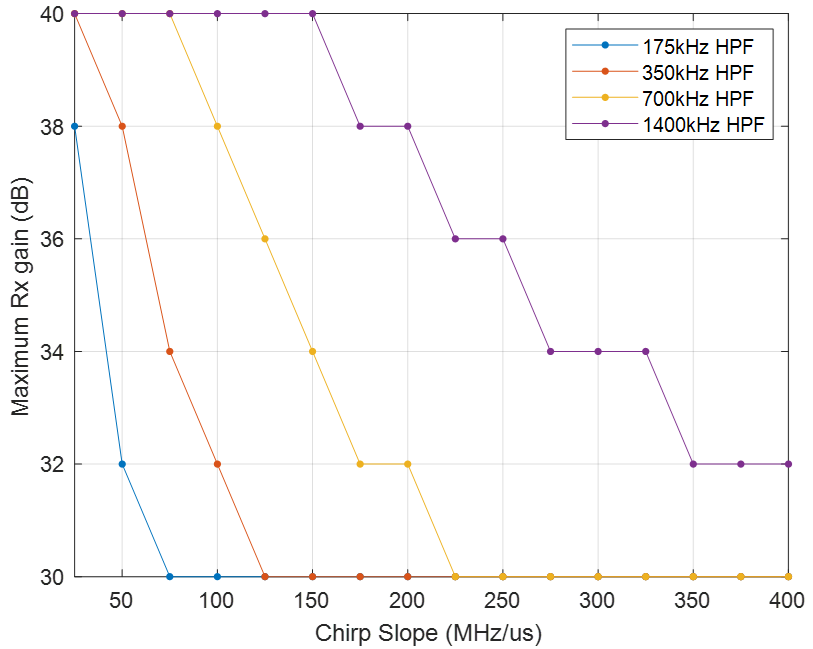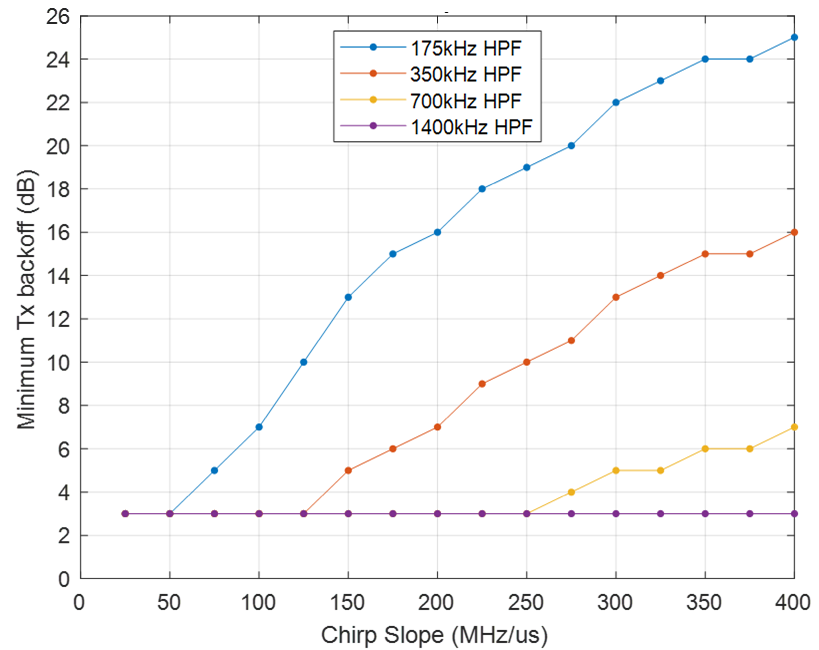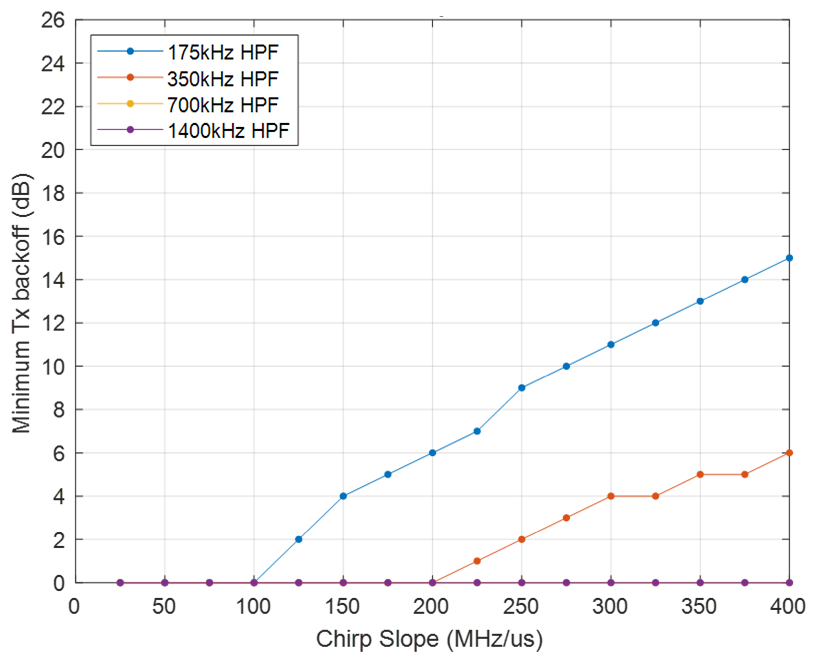SWRA820A May 2024 – August 2024 IWRL6432AOP
4 TX Backoff and RX Gain Recommendations
Figure 4-1 and Figure 4-2 give the maximum allowed RX gain setting and minimum TX back off restrictions based
on chirp slope (X-axis) and HPF setting (different colors). These are recommendations
which minimize the effects of increased receiver noise figure and risk of receiver ADC
saturation.
 Figure 4-1 Maximum Allowed RX Gain
Setting
Figure 4-1 Maximum Allowed RX Gain
Setting
 Figure 4-2 Minimum TX Backoff for 57 to
64GHz
Figure 4-2 Minimum TX Backoff for 57 to
64GHz
 Figure 4-3 Minimum TX Backoff for 61 to
64GHz
Figure 4-3 Minimum TX Backoff for 61 to
64GHz
 Figure 4-1 Maximum Allowed RX Gain
Setting
Figure 4-1 Maximum Allowed RX Gain
Setting Figure 4-2 Minimum TX Backoff for 57 to
64GHz
Figure 4-2 Minimum TX Backoff for 57 to
64GHzTX backoff restriction can be relaxed as shown in Figure 4-3 for the following cases:
- Chirps contained within 61 to 64GHz for two TX applications
- Chirps contained within 59 to 64GHz for single TX applications (using TX2)
 Figure 4-3 Minimum TX Backoff for 61 to
64GHz
Figure 4-3 Minimum TX Backoff for 61 to
64GHzUsing the previously-shown
constraints makes sure that the best possible SNR is achieved and also the receiver ADC
is not saturated.